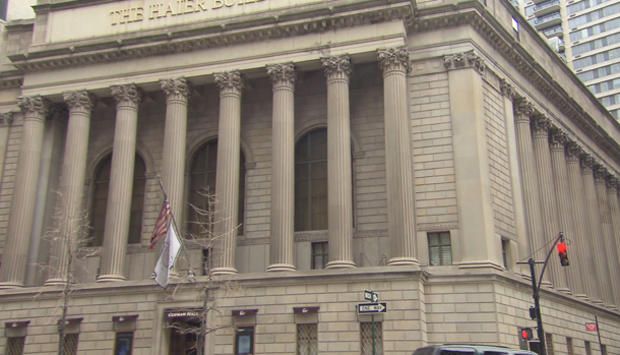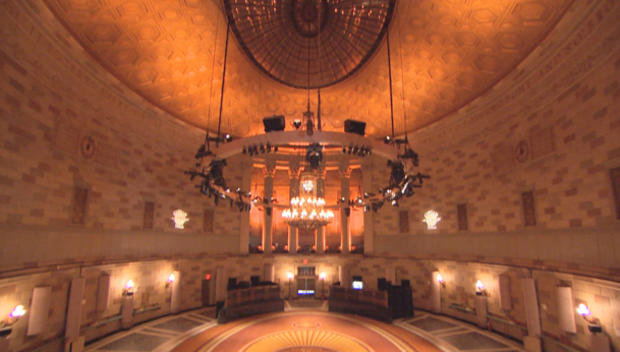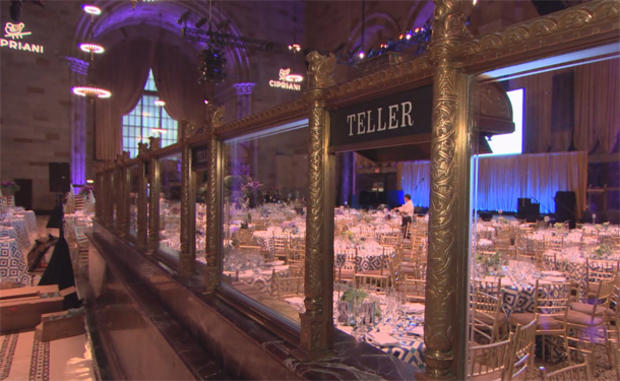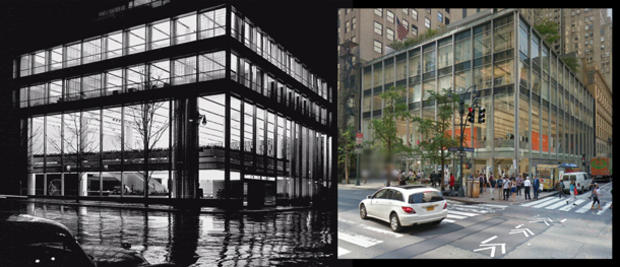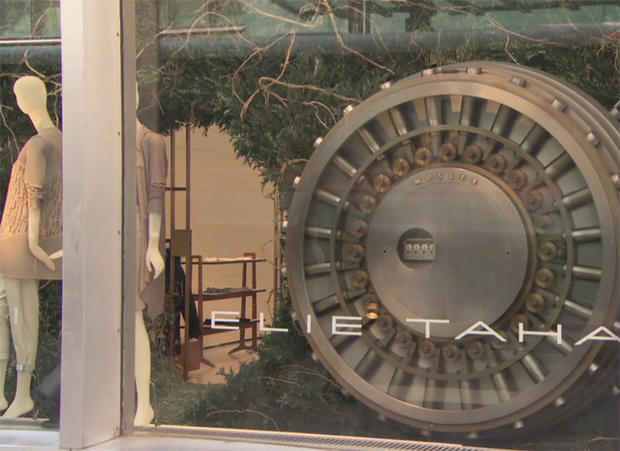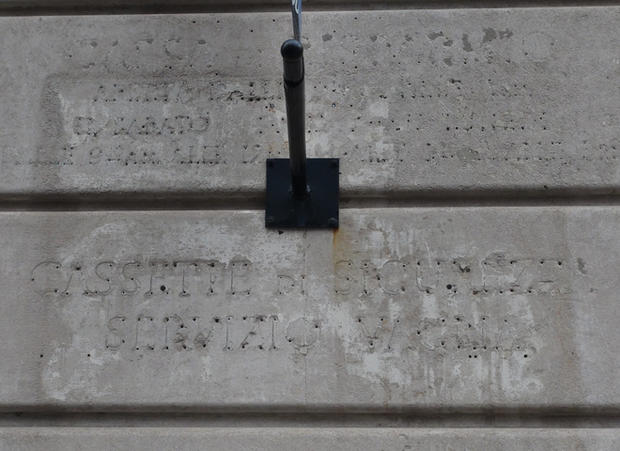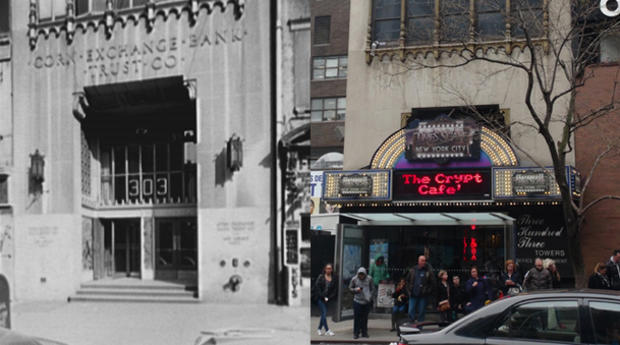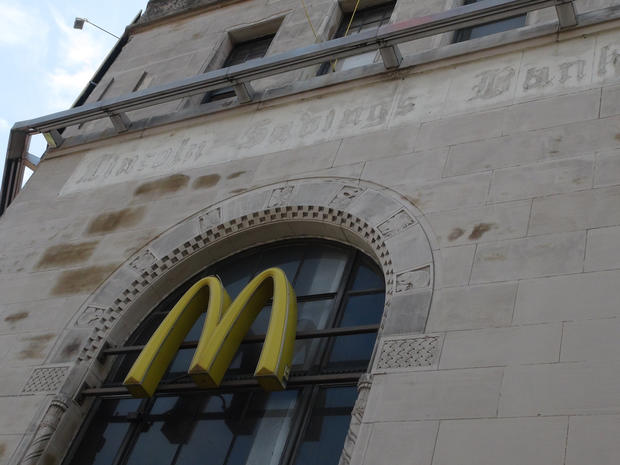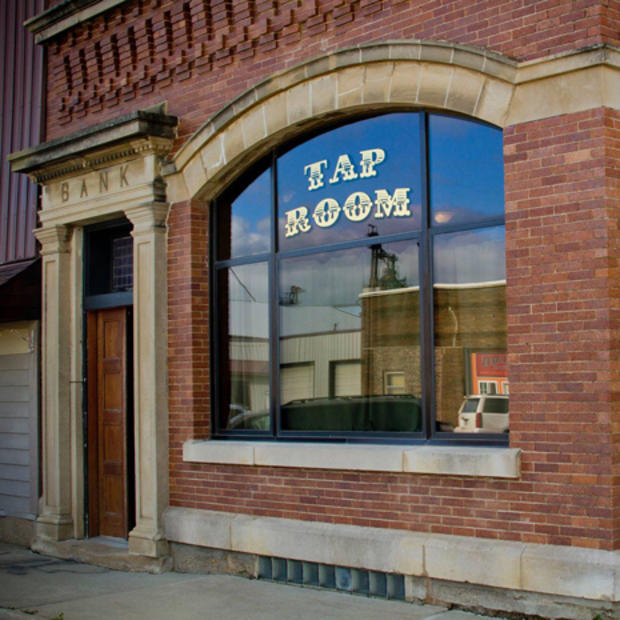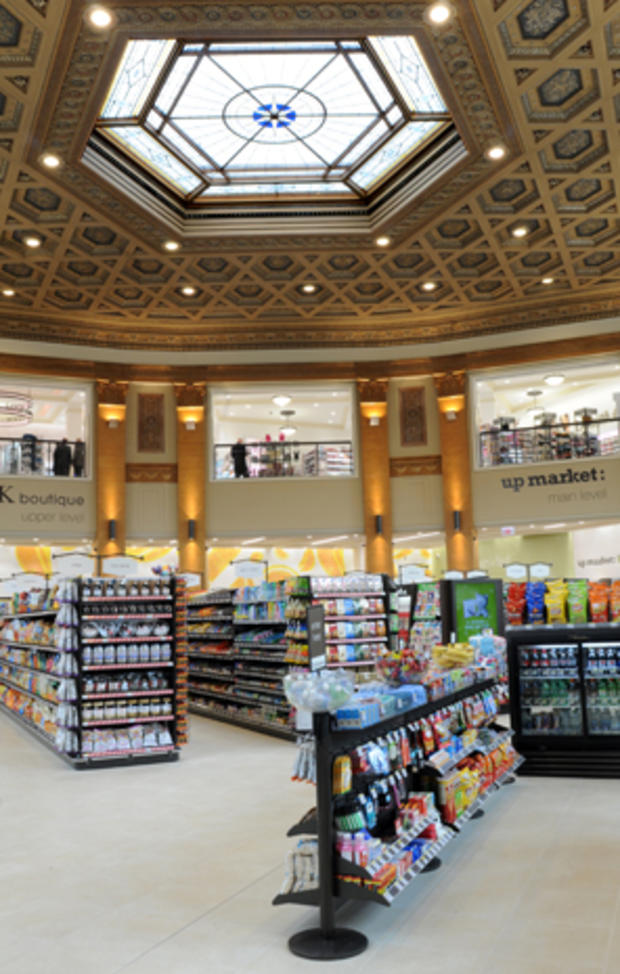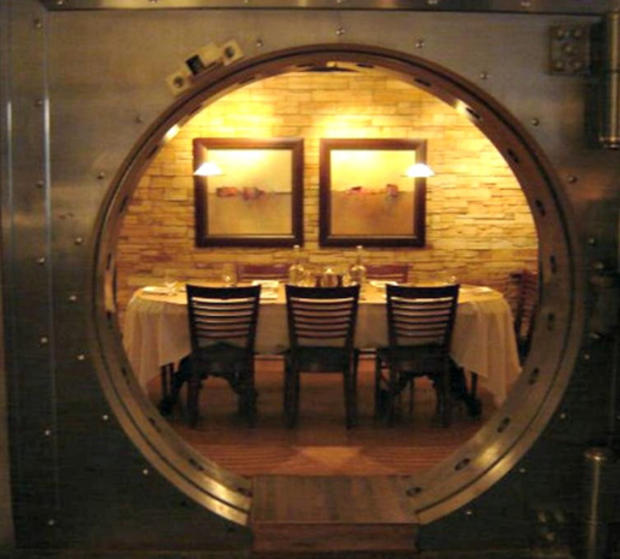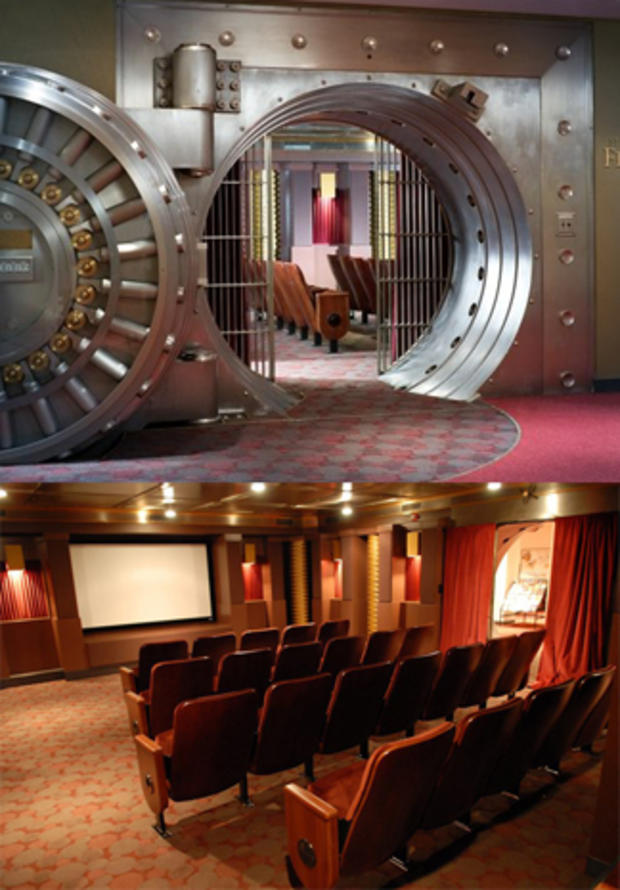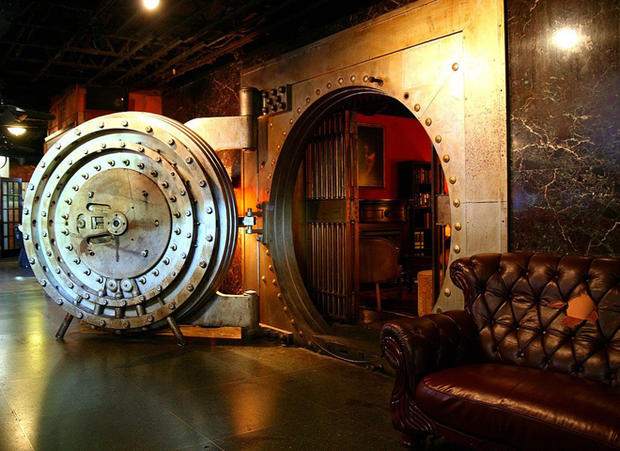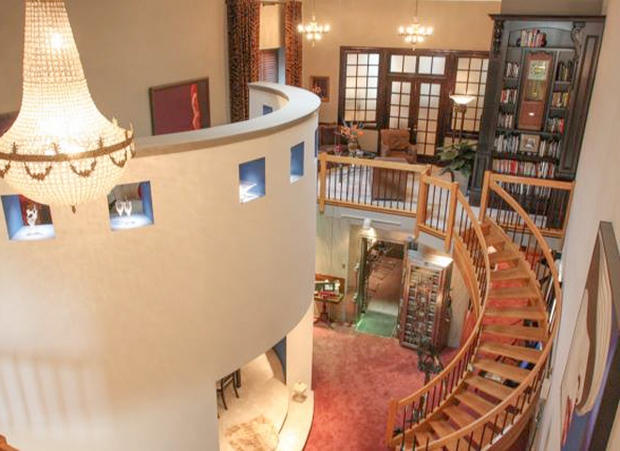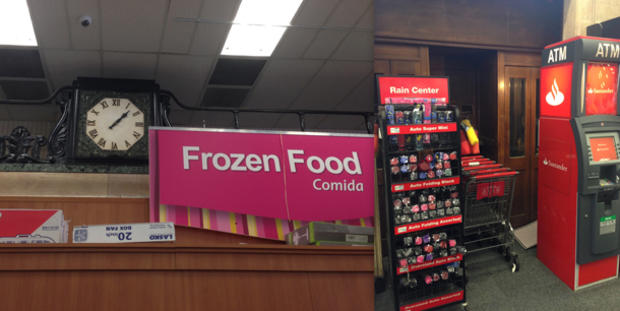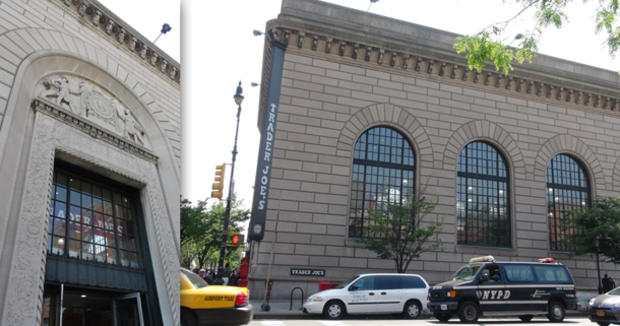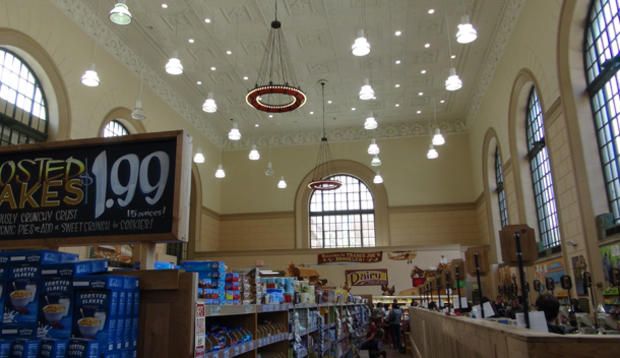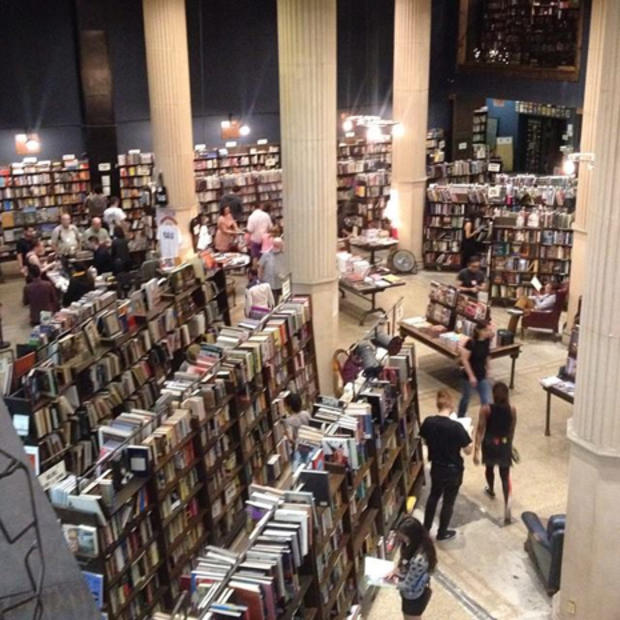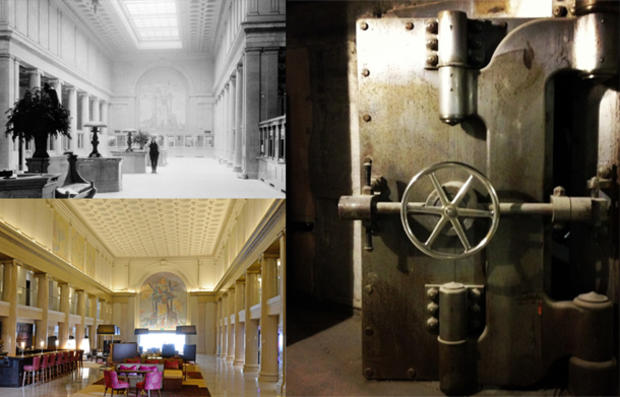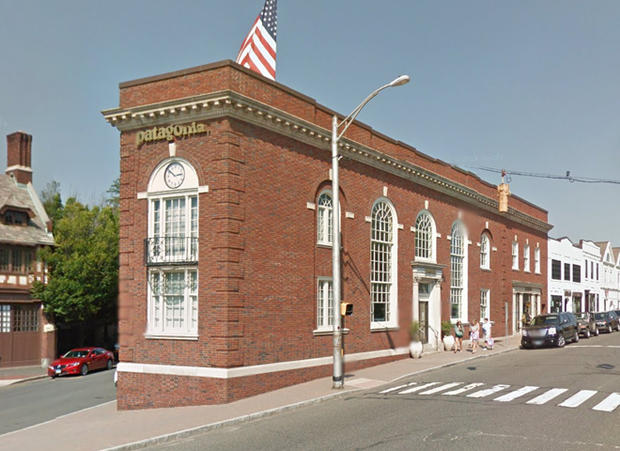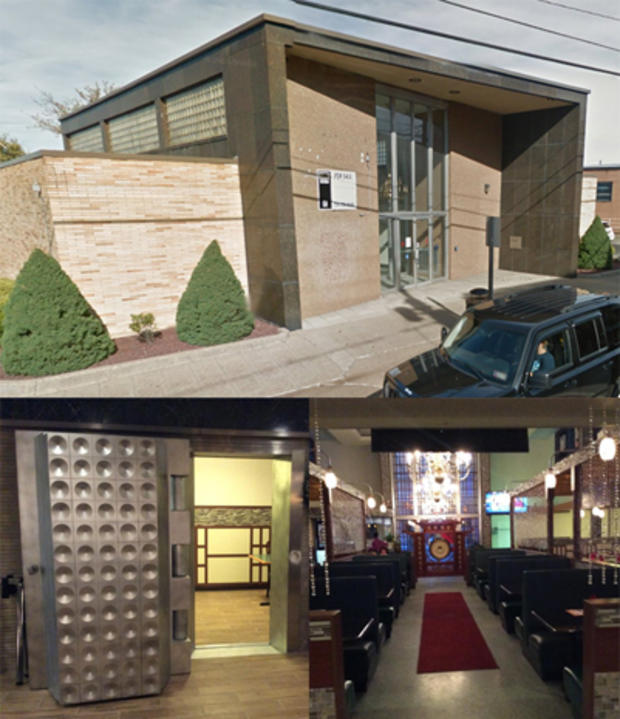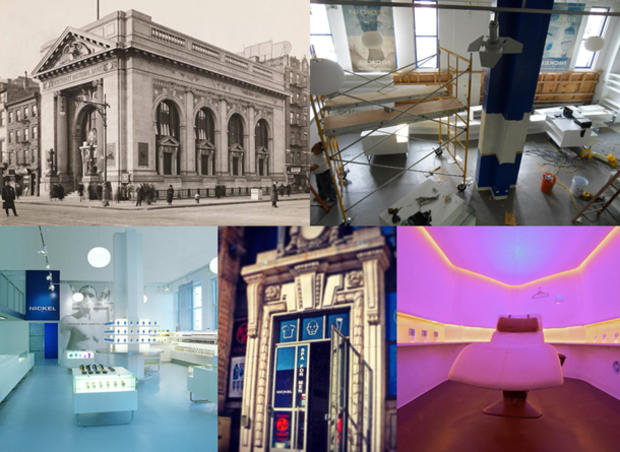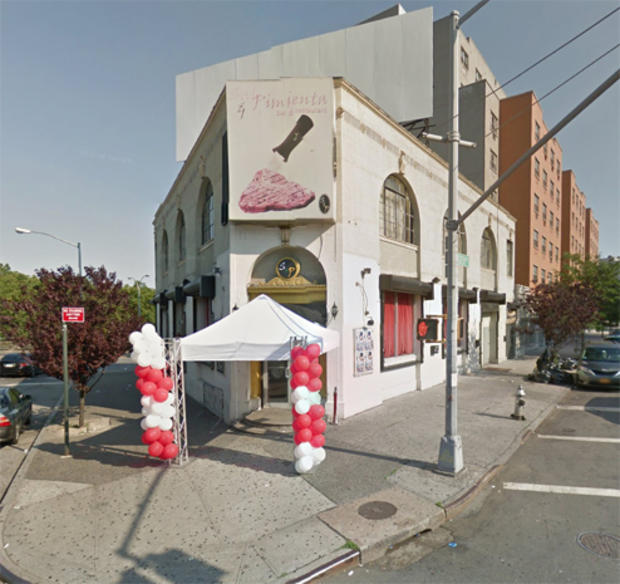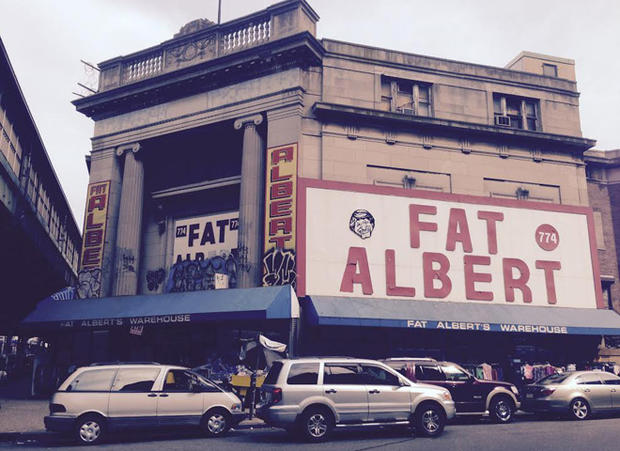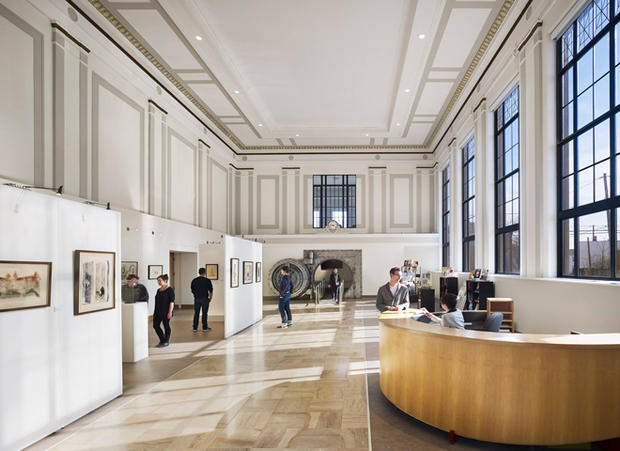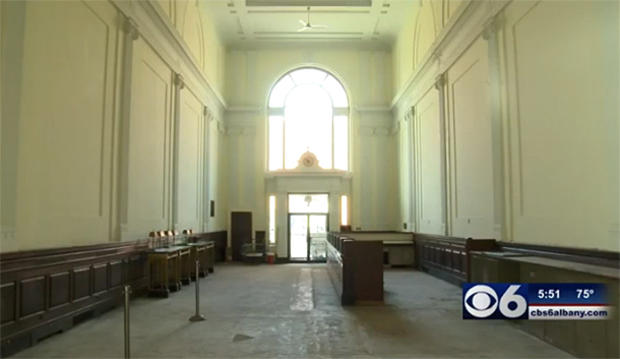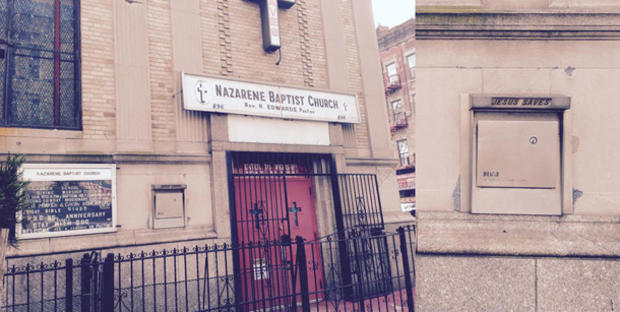New uses for failed banks
Bank buildings used to be designed to be imposing and monumental, to inspire a sense of security for investing one's savings there. "You'd go into the tiniest podunk town in America, and you'd find this really ornate classical bank," architect and historian Charles Belfoure told CBS News. "Even as a kid, I knew it was a fancy building and that it was a special building, just like a church would be."
But banks can, and do fail, and so these pillars of high finance often find themselves recycled to serve other business interests. At left: Instead of cold cash, this old bank vault houses refrigerated goods in a Chicago Walgreen's.
By CBSNews.com senior producer David Morgan
Bank Failure
Before the 1930s, when banks shut their doors for good, there was no protection for depositors.
"Throughout America's financial history, hundreds and hundreds of banks failed, and the depositors would lose every nickel they had," said Belfoure. "They'd go to the bank one morning, the doors would be shut. And there would be a note posted saying the bank is either 'temporarily closed' or 'permanently closed.' And that was it."
Left: Depositors congregate outside a failed bank, L.W. Schwenk, at 7th St. & Ave. A in Manhattan in 1914. [Today the building houses a Jamaican restaurant.]
Gotham Hall
Like a church, a bank's coffered ceiling and soaring pillars were intended to inspire awe and reverence for money - and confidence in the institution holding your life savings.
The former Greenwich Savings Bank, built in New York City in 1924, features columns 40 feet high and five feet in diameter made of solid limestone. "This was the last great classical bank built in New York City, and probably in the United States," historian Charles Belfoure told CBS News' Jane Pauley.
Today it is Gotham Hall, a venue for weddings and special occasions.
Gotham Hall
The interior of Gotham Hall, the former Greenwich Savings Bank. It's ironic, Jane Pauley said, "that the institutions that were built on saving money spent so much."
"They wanted to show the depositor that their money was absolutely safe," historian Charles Belfoure said.
The bank's vault, for example, might be ten percent of the cost of the entire building.
Cipriani 42nd Street
In 1921, Bowery Savings Bank, designed by Louis Ayres of the architectural firm York & Sawyer, opened a stunning branch bank at 110 East 42nd Street that echoed the Italian Renaissance, featuring giant arches, mosaics, marble and lofty 65-foot ceilings, in a building that critics called "a castle in the clouds brought to Earth."
Today it is an event venue, Cipriani 42nd Street.
Manufacturers Hanover
After the Great Depression, which Americans blamed on bankers, the banks had to win back the customers' trust with a new message and a new look: Transparency. In 1954 architect Gordon Bunshaft built a totally transparent building for Manufacturer's Trust, at Fifth Avenue and 43rd Street in New York - with the vault itself in the window. Belfoure said, "It almost seemed like people inside would be more honest, you know, about what they were doing."
Today, the bank is gone, but the 30-ton vault is still there in the window, like a jeweled accessory, at Elie Tahari's design store ... while the escalators that once conveyed customers to the banking floor now carry shoppers through the flagship store of Joe Fresh.
Elie Tahari
The original Manufacturer's Trust bank vault now welcomes window shoppers to Elie Tahari.
Duane Reade
Architect Cass Gilbert, who designed the Woolworth Building and the United States Supreme Court building, also designed this 1927 Beaux Art bank building that originally housed the East River Savings Bank. Today it is a Duane Reade drug store.
Duane Reade
The remnants of the inscription "cassette di sicurezza" ("safe deposit boxes") allude to the bank building's original Little Italy customers.
Corn Exchange
Built in 1928, New York's Corn Exchange Bank building, at 303 West 42nd Street, later housed the Show World porn palace. Today the building is home to performance spaces (including the Manhattan Repertory Theatre), a computer repair firm, a tattoo parlor, and apartments.
McDonald's
This McDonald's in Flatbush, Brooklyn, was originally the Lincoln Savings Bank. Built in 1932, it was one of five branches Lincoln had at its height, when it was the seventh largest savings bank in the country.
McDonald's
Lincoln ultimately merged with Anchor Bank, which later merged with Dime, then with Washington Mutual, then Chase. The actual building at Nostrand and Church Avenues was sold to Freedom National Bank of New York, which collapsed, making way for it to be sold to McDonald's 20 years ago.
Funeral Home
The changing demographics of a community are also revealed in the changing uses of buildings. As the predominantly Italian neighborhood of East 116th Street in Manhattan changed from "Italian Harlem" to become part of "Spanish Harlem" in the post-war years, the elegant Italian Savings Bank building (left, in the 1920s) became the R.G. Ortiz Funeral Home.
Bank Brewery
The taproom of the Bank Brewery in Hendricks, Minn., is located in an old bank building on Main Street.
The Bedford
Customers at Chicago's Bedford restaurant, in the old Home Bank & Trust building at Ashland and Division, can lounge in the bank vault surrounded by hundreds of safe deposit boxes.
Walgreen's
The historic neo-classical Noel State Bank Building in Chicago, designed by Gardner C. Coughlen and built in 1919, has housed several banks since the original failed during the Depression. After the last bank closed several years ago, the building was converted in 2012 into a flagship retail store by the drug chain Walgreen's.
Canyon Chop House
The Canyon Chop House restaurant in Fort Collins, Colo., in a renovated bank building, offers a private dining room in the vault.
Kansas City Public Library
In 2007, after the Kansas City Public Library expanded into the former First National Bank building, the bank vault with a 35-ton steel door became a 28-seat screening room, called the Stanley H. Durwood Film Vault.
The facility (which is also available to rent for business presentations or private screenings) recently sheltered library patrons during a tornado warning.
Kelvin Arms Pub
The Kelvin Arms is a Scottish pub in Houston that keeps its selection of scotches under lock and key, in the vault of a former bank on Dunstan Road that previously housed a bar, called the Bank Draft.
Luxury Home
As a teenager, Cathy Calhoun worked as a teller at the National Bank of Spring City in Pennsylvania. Years later, Calhoun - who now owns Calhoun Jewelers - bought the old bank building for $52,000, and over 24 years converted it into a luxury home, which she has dubbed "Calhoun Federal."
Originally built in 1872, it is now a 3-bedroom, 3-bath house. It retains its original chandeliers and exterior clock, while Calhoun has renovated the downstairs vault into a sauna.
CVS
The modified Greek design of the former East River Savings Bank, on Amsterdam Avenue and 96th Street in Manhattan, makes for a very grand CVS drug store. But the carved inscription looming overhead ("Teach economy - that is one of the first and highest virtues. It begins with saving money") couldn't be more appropriate for a seller of discount toiletries.
CVS
The former East River Savings Bank's marble interior and decorative metalwork is preserved within, albeit hidden behind shelves and signs.
But while the phones have been ripped out of the period phone booths, a nod to the building's past can be found thanks to the handy ATM.
Trader Joe's
Founded in 1857, the South Brooklyn Savings Institution opened its headquarters on Court Street in 1923. The bank expanded beyond the borough, but was ultimately taken over in 2006. Two years later, the building became home to Brooklyn's first Trader Joe's.
Trader Joe's
The interior of the Italian Renaissance-style building has been well-preserved in its transition to Trader Joe's.
The Last Bookstore
The Last Bookstore in Los Angeles occupies 10,000 sq. ft. of space in the Spring Arts Tower, at 5th & Spring, built in 1914 and formerly the site of Citizens National Bank (later called Crocker Citizens National Bank).
Renaissance Denver Downtown City Center
The Colorado National Bank building, erected in 1915, was recently turned into the Renaissance Denver Downtown City Center Hotel. The bank's original murals by artist Allen Tupper True remain, as does the bank vault, which now houses three boardrooms behind its original 33-inch-thick steel doors.
Patagonia
The Westport Bank & Trust Co. building in downtown Westport, Conn., is now the site of a store for clothing retailer Patagonia.
Sakura Japanese Steakhouse
In 2014 the vacant Huntington Bank building on Pennsylvania Avenue in Monaca, Pa. (top), which had been on the market for several years, was purchased and converted into the Sakura Japanese Steakhouse (bottom).
Nickel Spa for Men
In 1928 the New York County National Bank constructed a limestone Beaux Art headquarters on the southwest corner of 14th Street and 8th Avenue, designed by DeLemos & Cordes (the same architectural firm that built Macy's Department Store on 34th Street). The temple-like structure featured Corinthian columns and references to Mercury, the god of commerce.
After the bank's demise, the building was turned into a theatre. Recently it was converted into condominiums and a health spa for men (since closed).
Sal y Pimienta Restaurant
Once the Bronx County Trust Company building, 1472 Ogden Avenue in the Bronx, N.Y., is now home to the Sal Y Pimienta Bar & Restaurant and, upstairs, Rosa's By the Bridge banquet hall.
Fat Albert Warehouse
On Broadway in Brooklyn this former Manufacturers Trust bank is now the Fat Albert Warehouse, a discount housewares outlet.
Susquehanna Art Museum
The former Keystone Bank Building in midtown Harrisburg, Pa., was renovated and expanded as the new home of the Susquehanna Art Museum.
Troy Kitchen
The former Union National Bank in Troy, N.Y., built in 1936, has long been vacant, but entrepreneur Cory Nelson will soon revamp the building to house a gourmet food court, Troy Kitchen.
Century 21
The stainless steel eagles perched atop the neo-Classical Art Deco East River Savings Bank branch, designed by the firm Walker & Gillette and built in the early 1930s at Church and Cortlandt Streets in lower Manhattan, now stand guard over a Century 21.
Century 21
The former occupants.
Nazarene Baptist Church
This 1925 bank building at the corner of Dekalb Avenue and Marcus Garvey Boulevard, on the northern edge of Bedford-Stuyvesant in Brooklyn, is now home to the Nazarene Baptist Church. The night depository slot is still there, helpfully adorned with the message, "Jesus Saves."
For more info:
"Monuments to Money: The Architecture of American Banks" by Charles Belfoure (McFarland)


